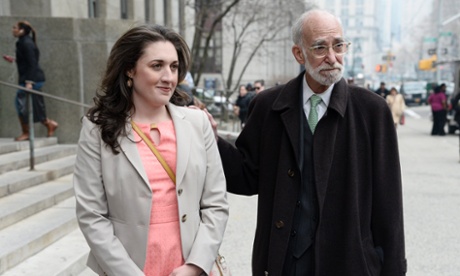 Coverage of Saturday's march in Washington D.C. with the Cowboy Indian Alliance. Thousands marched against the Keystone XL pipeline, the largest event of a 5 day "Reject and Protect" encampment. The Obama administration has announced that decision on the pipeline is again delayed; the proposed route snakes through the Ogallala Aquifer, from Alberta, Canada to the Gulf of Mexico, entering six states. Most of the oil would be shipped outside the U.S., most jobs would be temporary, and only 35 jobs would be permanent.
Coverage of Saturday's march in Washington D.C. with the Cowboy Indian Alliance. Thousands marched against the Keystone XL pipeline, the largest event of a 5 day "Reject and Protect" encampment. The Obama administration has announced that decision on the pipeline is again delayed; the proposed route snakes through the Ogallala Aquifer, from Alberta, Canada to the Gulf of Mexico, entering six states. Most of the oil would be shipped outside the U.S., most jobs would be temporary, and only 35 jobs would be permanent.From the Wisconsin Gazette:
"Boots and moccasins showed President Obama an unlikely alliance has his back to reject Keystone XL to protect our land and water,” said Jane Kleeb, executive director of Bold Nebraska, one of the key organizers of Reject and Protect.

Reject and Protect protesters make the point in front of the Washington Monument: "Standing in water could get me arrested. TransCanada pollutes drinking water and nothing happens."
Also:
The day’s procession included the presentation of a hand-painted tipi to the Smithsonian National Museum of the American Indian as a gift to Barack Obama.
The tipi represented the Cowboy and Indian Alliance’s hopes for protected land and clean water. The formal name of the tipi is “Awe Kooda Bilaxpak Kuuxshish” and “Oyate Wookiye,” two names given to Obama by the Lakota and the Crow Nations upon his visit to those Nations in 2008. The title translates from the Lakota and Crow languages, respectively, as "Man Who Helps the People" and “One Who Helps People throughout the Land."
“Keystone XL is a death warrant for our people,” said Oglala Sioux Tribal president Bryan Brewer, who helped lead the presentation of the tipi to the Smithsonian. “President Obama must reject this pipeline and protect our sacred land and water. The United States needs to respect our treaty rights and say no to Keystone XL."Steven Tamayo of Sicangu Tribe painted the tipi over 3 days, with as many as 50 volunteers, including children as young as five years. A description of images on the tipi here at Popular Resistance.
Some twitter pictures on the tipi:
Rt @johnzangas Tipi painting half finished It will be gifted to National Museum of American Indian #RejectAndProtect pic.twitter.com/Hc4nE8sOJT
— RadicalMedia_ (@UnToldCarlisle) April 24, 2014
Steve Tamayo puts finishing tipi which to be signed, gifted to Nat'l Museum of American Indian #RejectAndProtect pic.twitter.com/y278dCdr1k
— john zangas (@johnzangas) April 25, 2014
My fingerprint is on the tipi to be given to the National Museum of the American Indian! #RejectAndProtect #NoLXL pic.twitter.com/W3Q0FuVP40
— Richelle C. Brown (@BirchCelloWren) April 26, 2014
Tribal leaders and representatives present Pres. Obama's tipi to the Museum of the American Indian #nokxl pic.twitter.com/JhCqiRRLHR
— 350 dot org (@350) April 26, 2014
Tipi presentation to Museum of American Indian @SmithsonianNMAI #RejectAndProtect via @AnnCorbett pic.twitter.com/0CjpQSPQvo
— DCMediaGroup (@DCMediaGroup) April 26, 2014
Earlier- RT @johnzangas: Gifting the tipi to National Museum of the American Indian on behalf of tribes #NoKXL pic.twitter.com/LroOYA39k2
— Stop The Wars (@sickjew) April 26, 2014
In the video below, Amy Goodman speaks with actress and activist Daryl Hannah, arrested 3 times in protests against the Keystone XL; also, from the Cowboy Indian Alliance, Nebraska farmer Art Tanderup and Reject and Protect organizer Gary Dorr of the Nez Perce Nation.
"This issue is important to me," said Mr. Dorr, "certainly for the Rosebud Sioux Tribe and the Great Sioux Nation, because it threatens the Ogallala Aquifer, which provides drinking water for 2.3 million people. It also threatens the Missouri River, which provides drinking water for probably a couple 'nother million. So we're talking about five million American citizens who are—who have their drinking water supply threatened. This water supply also provides crops, water for our crops, for irrigation. So now we’re talking about more and more millions and millions of people who could be affected. This could be an economic bust for the Midwest."
Mr. Tanderup, who is north of Neligh, Nebraska, and right on the pipeline route, as well as the 1870s Ponca Trail of Tears, describes the Ogallala Aquifer as the United States’ largest clean water and underground aquifer.
"It [the aquifer] starts," he says, "in South Dakota, covers most of Nebraska and on down into Kansas and parts of Oklahoma, as well. And it’s—you know, it’s not necessarily a big lake under the ground; it’s more of a huge sponge of—in gravel, sand, etc., that provides clean drinking water. It provides water for livestock, for wildlife, for human consumption, for irrigation. It’s the livelihood of the Heartland."
Neil Young was also in Washington D.C. for the demonstration; he recently completed an Honour the Treaties tour crossing Canada to protest pipeline development in First Nations communities there.
"We need to end the fossil fuel age and move into something better," he told the crowd.
More below:









